An RV propane furnace is among the many great conveniences of a home-on-wheels. Just like in any home, when it’s cold outside and you need to warm the house, you turn the thermostat up, and voila! Within minutes the RV warms up and you’re warm and cozy. It’s almost magical. But what’s behind the magic? How does an RV propane furnace work? This is important information, especially if one day you turn up the thermostat and the magic doesn’t happen.
So, today we’re presenting the details of exactly what happens when you call for heat by turning up your RV’s thermostat.
How Does an RV Propane Furnace Work?
An RV furnace is the rig’s main heat source. It uses both propane and electricity (12V). The propane creates hot air while electricity powers the electronics & circuits that turn on the heating system and which also runs the fans.
This is a forced-hot-air system that requires a thermostat, a control board, a relay, a blower motor, sail switch, high-level switch, ignitor, and some ductwork.
To make the system work, you set the thermostat higher than the RV’s current inside air temperature, which activates the blower motor. The propane burns, creating hot air that’s distributed throughout the RV through the ducts.
That’s the simple version. Now let’s take a look at each of the steps – and the parts – involved in the operation of an RV propane furnace.
What Are the Steps Involved in the Operation of an RV Propane Furnace?
- Someone in the RV turns the thermostat up (if you’re like us and have a Micro-Air EasyTouch RV thermostat, you can do that using your smartphone from the comfort of your bed – it’s wireless and works with an app on your smartphone! Save $15 when you buy an EasyTouch RV Thermostat using the discount code “ETRVGEEKS“)
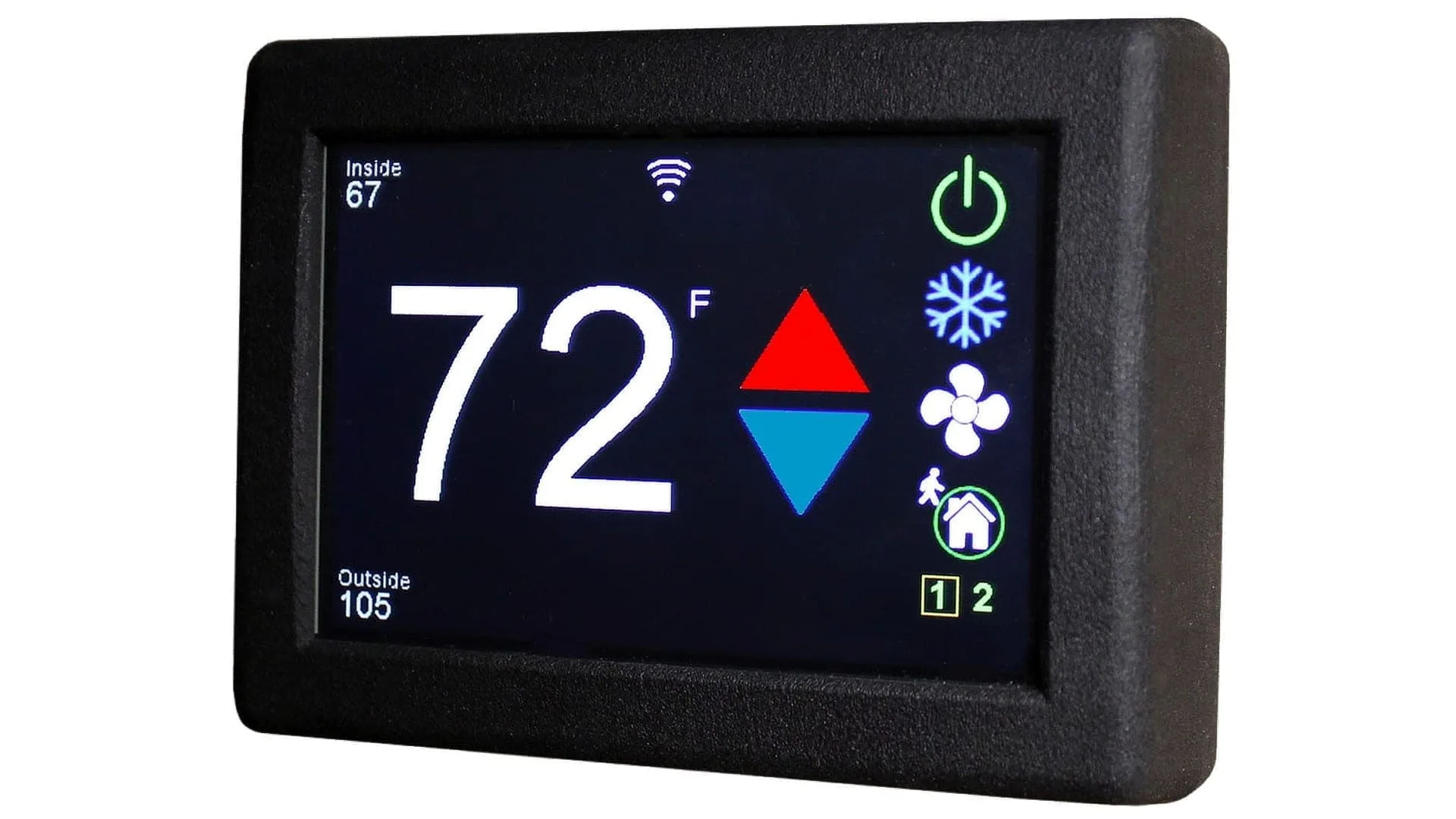
The clear, bright, color touchscreen of the Micro-Air EasyTouch RV Thermostat (buy one using the discount code “ETRVGEEKS” and save $15)
2. The thermostat sends an electrical signal to the furnace’s circuit board/control board.
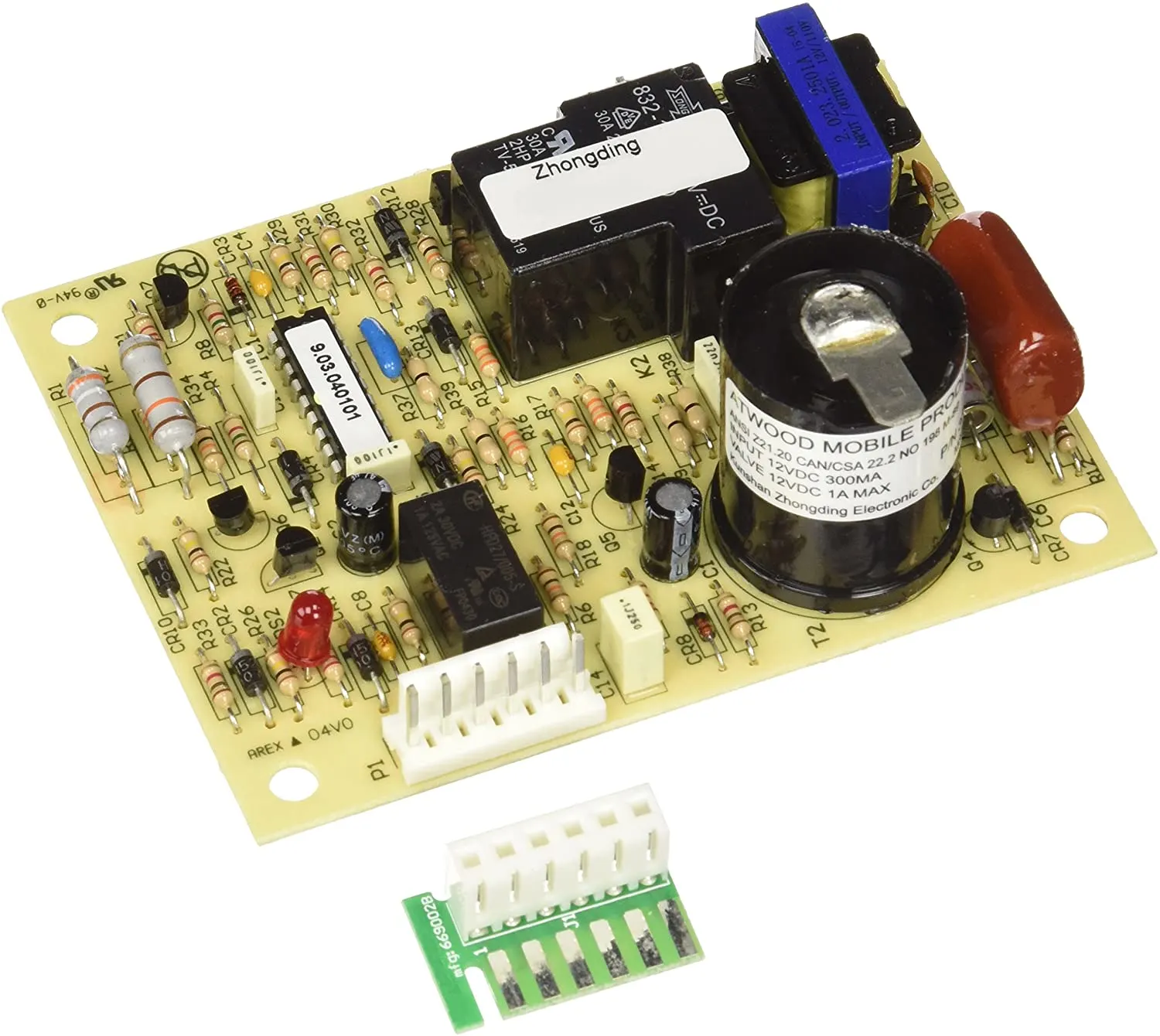
An electrical signal is sent to the circuit board by the thermostat, telling the propane furnace to ignite. (Photo credit Atwood/Dometic via Amazon.)
3. The electrical signal moves through a relay which starts the blower motor.
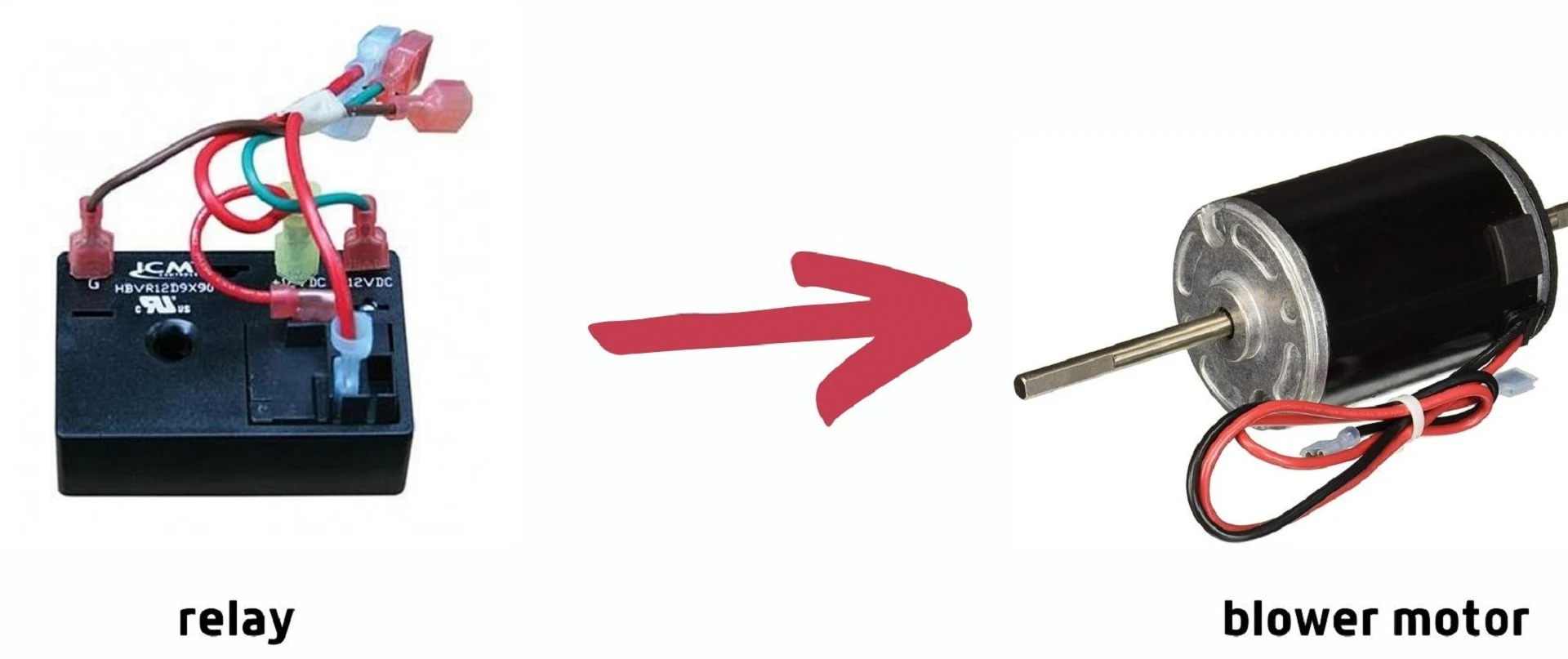
From the control board, the electrical signal moves through the relay which starts the blower motor. This is when you hear the furnace turn on. What you’re hearing is the blower motor spinning.
4. Once the blower fan is at full speed, the sail switch is activated, indicating an airflow that’s sufficient to properly exhaust combustion fumes from the furnace. (The sail switch is the first of two safety switches.)
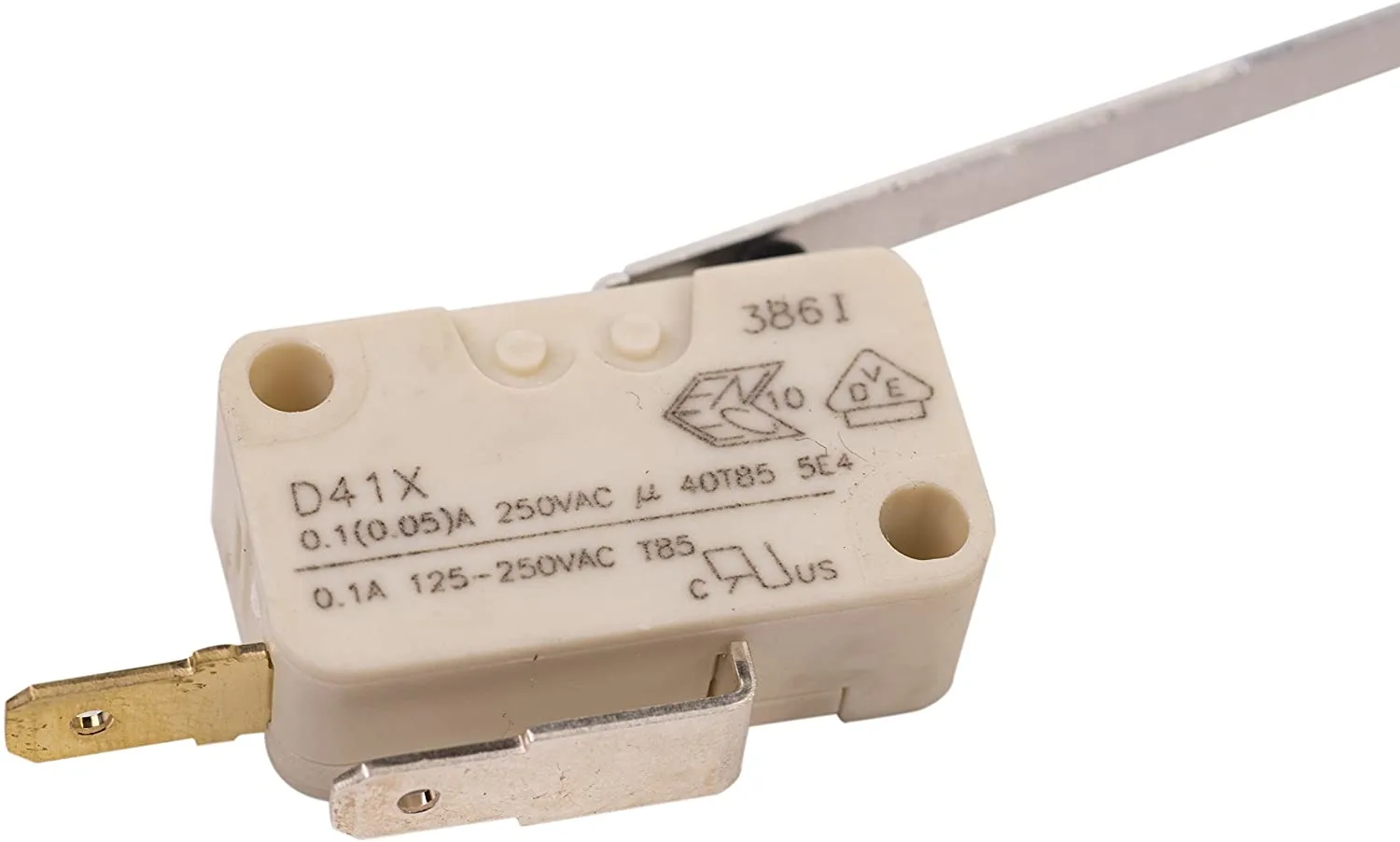
The sail switch is a safety switch. The said switch can only be activated once the blower motor fan is spinning at full speed, producing sufficient airflow to safely exhaust combustion fumes from the furnace. If the sail switch is not activated, the furnace won’t light. (Photo credit: Atwood/Dometic via Amazon.)
5. Next, the electrical signal moves to the high-level switch which confirms that the temperature in the burner chamber is safe for the furnace to start. (The high-level switch is the second safety switch, ensuring that the furnace components are not at risk of overheating.)
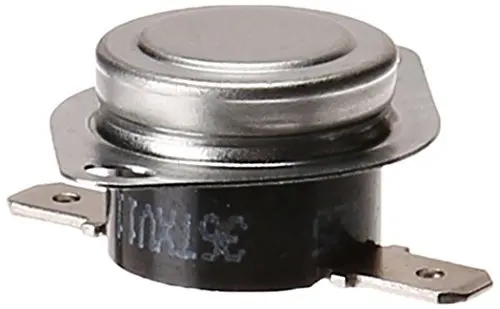
The high-limit switch (or “limit switch”) is the second safety switch in the RV propane furnace. The electrical signal moves to the high-limit switch to confirm that the temperature in the burner is safe for the burner to start. (Photo credit: Atwood/Dometic via Amazon.)
6. Once the two safety switches (sail switch & high-level switch) have activated successfully, the gas valve opens, allowing propane into the combustion chamber. Simultaneously, the ignition module on the circuit board sends current to the ignitor in the combustion chamber.
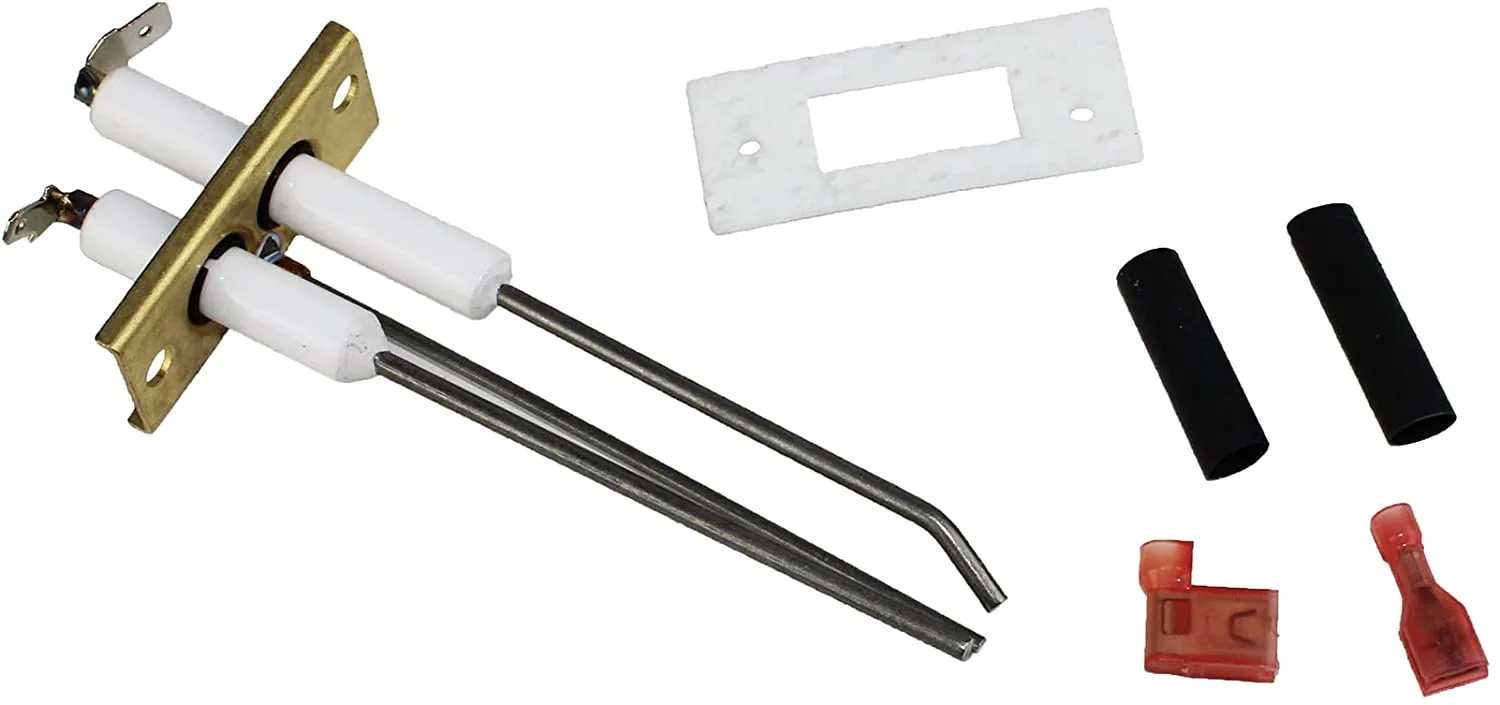
The current from the circuit board is sent to the ignitor, creating a spark between the two ignitor tips. This ignites the propane which produces the heat that keeps you warm! (Photo credit Atwood/Dometic via Amazon.)
7. The current creates a spark between the two ignitor tips, igniting the propane which produces the heat that flows through the heating ducts and is dispersed throughout the RV.
How Much Propane Does an RV Propane Furnace Use?
This is a tough question to answer with any real detail because there are a number of variables that come into play involving the furnace itself (how big it is, how efficient, etc), the size of the RV (how much space there is to heat), how well it’s insulated, the ambient temperature, and more.
But on average, an RV propane furnace is said to use roughly ⅓ of a gallon of propane per hour, running continuously.
This is a very rough estimate, however, based on average usage. Your usage could differ considerably depending on all of the variables noted above and how warm you like your RV to be.
Are RV Propane Furnaces Safe?
RV propane furnaces have proven to be very safe as long as appropriate attention is given to regular maintenance, and as long as there is a working propane detector and a working carbon monoxide detector in the RV.
A propane furnace is not an appliance that can be ignored, and it shouldn’t be run (nor should any appliance involving propane) unless it’s running in the company of propane and carbon monoxide detectors.
Remember that those detectors can’t do their jobs if they’re not working properly. If any of your safety detectors – propane, carbon monoxide, or smoke – use a battery, put an alert in your calendar for when the battery needs to be changed, and do it.
And all types of detectors will have a date printed on them indicating when they need to be replaced. Never ignore that task. Not even for a day. Replacing them, even hardwired ones is an easy DIY task:
Final Notes
Be sure your RV propane furnace has proper airflow. The propane heater needs to be properly ventilated and the air intake unobstructed. Also, be sure not to cover your vents when the furnace is running.
You may notice a dusty smell, particularly upon first using the furnace after it hasn’t been used for a long period of time. This is normal and is caused by a build-up of dust and debris over time. It should eventually burn away (though you may well notice it again at the start of the next season of use).
If you notice a propane smell, this is NOT normal. Turn off the furnace, stop the flow of the LP gas immediately, open doors and windows, and attempt to identify the source of the propane leak. (Note: your propane detector should be alerting you if there is a propane leak inside the RV.)
Finally, be sure to maintain your propane regulators along with your RV furnace. See our post entitled, “Do I Need a Propane Regulator for My RV?” for more information.
Geek Out with Us Every Week
Join our newsletter to learn about all things RV-related. Every week we offer free tips, tricks, product reviews, and more to our online community of RVers. So, whether this is your first time on the road or you’re a seasoned expert, we’d love for you to geek out with us!


Mark
Monday 27th of February 2023
Great explanation, guys! Showing the parts was great.